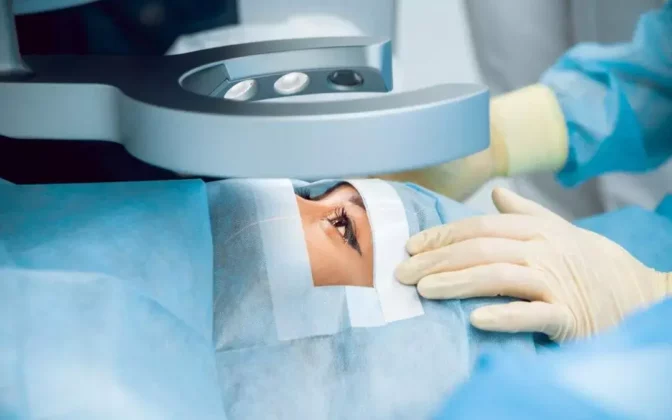
Femtolasik (Femto-LASIK) surgery is a type of refractive surgery that uses femtosecond laser technology to reshape the retina of the eye. PRK is one of the excimer laser operations like No-touch, Smile, Lasik operations. This operation is used to correct myopia (nearsightedness), hypermetropia (farsightedness) and astigmatism. Unlike traditional LASIK surgery, Femtolasik uses femtosecond laser technology instead of a mechanical microkeratome, which creates a more precise and safer corneal flap.
Femtolasik surgery is generally suitable for people over the age of 18 whose vision has not changed in the past year. It is important that candidates have healthy eyes and that the corneal thickness is sufficient for surgery. Pregnant women, those with certain eye diseases or autoimmune diseases may not be suitable candidates for this surgery.
More Precise and Safer: Because the femtosecond laser is used, the operation is more precise and safer.
Fast Recovery: In most cases, patients can return to their normal activities a few days after surgery.
Less Pain: Minimal pain is felt during and after the operation.
Higher Quality of Vision: Femtolasik surgery significantly improves the quality of vision.
The operation consists of several stages:
Preparation: Eyes are numbed with local anesthesia.
Flap Creation: The upper layer of the cornea (flap) is created with a femtosecond laser.
Corneal reshaping: The cornea is reshaped using an excimer laser.
Flap Retraction: The flap is carefully repositioned and left to heal on its own.
Examination: A detailed eye examination and vision test should be performed.
Contact Lens Removal: Contact lenses should not be worn for at least one week prior to surgery.
Cleanliness of the eyes: On the day of the operation, the eyes must be clean of any make-up or lotion.
Dry Eyes: Temporary dry eyes may be experienced after surgery.
Vision Problems: Rings, glare, or night vision problems.
Infection: Rare, but there is a risk of infection after surgery.
Flap Problems: Improper positioning or movement of the flap.
The success rate of Femtolasik operation is very high. In most cases, more than 95% of patients achieve 20/20 vision or better. The results of the operation may vary depending on the individual characteristics of the patient and the experience of the surgeon who performed the operation.
Recovery time is usually quick. Most patients can return to their normal activities within a few days after surgery. It may take several weeks for full recovery and optimal vision results.
Avoid touching the eyes: Do not touch the eyes after the operation.
Eye Drops: Use eye drops prescribed by a doctor.
Avoid Strenuous Activities: Avoid strenuous physical activities for the first few weeks.
Wearing Sunglasses: Wearing sunglasses to protect the eyes from bright light.
The cost of Femtolasik surgery varies depending on a variety of factors, including the experience of the surgeon, the clinic, and the technologies used. The price of this operation in Azerbaijan usually varies between 1500-3000 AZN.
The operation is usually painless. Local anesthesia is used and patients may feel only slight pressure during the operation. After the operation, there may be minimal discomfort or burning sensation, but this will pass in a short time.
The operation usually takes 10-15 minutes. The total duration of the operation for both eyes is about 30 minutes. Preparation and a short waiting period after the operation should also be taken into account.
Vision improves very quickly after Femtolasik surgery. Most patients begin to see clearly a few hours after surgery, and optimal vision is achieved within a few days. It may take several weeks for full recovery and stable vision results.
In most cases, there is no need to wear glasses or contact lenses after surgery. However, in some cases, additional correction may be required due to age-related vision problems or small residual refractive errors after surgery.
Femtolasik surgery provides long-term and permanent results. The visual results obtained after the operation are stable in most cases. However, age-related changes and other factors affecting eye health may cause vision problems in the future.
2024-07-17
2024-02-14
2024-02-14
2024-06-12
2024-06-13
2024-06-13
2024-06-13
2024-06-14
2024-06-14
2024-06-14
2024-06-14
2024-06-14
2024-06-14
2024-07-31
2024-07-31
2024-07-31
2024-07-31
2024-08-09
2024-08-12
2024-08-28
2024-09-05
2024-09-06
2024-09-14
2024-09-19
2024-09-19
2024-10-01
2024-10-02
2024-10-07
2024-10-21
2024-10-23
2024-10-29
2024-11-12
2024-11-18
2024-11-21
2024-11-26
2024-11-28
2024-12-03
2024-12-06
2024-12-10